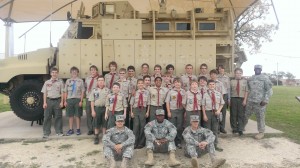There are lots of ways to deliver an evening recruiting event, but I’d like to share mine for those looking for different ideas.
School Night for Scouting (SNfS) actually begins a few weeks before the recruiting event itself.
See my earlier blog on the T-minus-two-week plan for recruiting and the mid-day Rally video.
So now, you’ve hopefully been able to send flyers home, your scouts helped deliver the morning announcements, perhaps your scouts wore their uniform at school, you’ve done a mid-day rally to get them excited, and now they are coming to the school cafeteria tonight.
Here are some ideas for the SNfS evening itself:
1. Recognize that SNfS is as much (or more) about recruiting adults, as it is the youth. If a parent takes the time to get their son to the evening event, they intend to register him unless you give them a reason/excuse not to. So, plan on collecting an adult application (and the fee) for every youth. Make them all ‘MC’ members of committee unless they already know that they are willing to be a Den Leader – and you can figure out how to use them later (Pinewood, Food drive, fundraising, etc.). You’ll have a few who adamantly refuse, but its likely that most of those parents would be your drop-off Baby Sitters of America parents, so handle how you see fit.
2. Keep the boys with the parents. It might seem easier to distract the boys with games while the adults do paperwork, but you’ll significantly increase the likelihood of the parent registering when little Johnny is tugging at their sleeve, being excited.
3. Keep the energy up. The presentation and paperwork aren’t a lot of fun, so keep reminding them of all the fun that Scouting is (after tonight).
Here are a few suggestions for running the evening:
Seat them by grade-level when they first come in – so that the dens are already formed.
Have a sign-in sheet, to capture contact information before the event. Some folks may leave early, so this gives you a chance to follow-up later if they are missing an application. Also, use sticky nametags with a small number in each corner that corresponds to their number on the sign-in sheet (see newspaper game).
The presentation should include not only ‘information’ such as org-structure – but also fun parts (slide show from last year) and a little bit of selling the adult contribution.
Here is a PPT that I have used in several Packs:
Download the PPT here — SNfS PPT 2013A
- Quick slideshow of last year. Remember, you want them excited to join. If you did a slideshow movie for last year’s Blue & Gold, use it. If not, do a spontaneous opening poll of the boys on ‘why did they bring their parents to join Scouting? Easy answers; Shoot stuff … Burn stuff … Camping … Go see cool places … etc.
- Quick overview on the character-building value of Scouting (don’t read every point). Acknowledge that all of the parents in the room what their boys to turn into men of character, so Scouting is here to partner with them in that noble effort.
- The Story of the Tape. It starts with ‘Your boy may live to 100’ and ends with ‘your time to influence them is ages 7-15, which is the Scouting years. This is your time together’ This part also works well with just a long strip of paper (3 feet or longer), but the PPT is narrated and fits within the PPT. Use whichever, but it is a strong message why the parents should be devoting NOW to their boys.
- The Newspaper game. This is a great model of ‘Fun with a Purpose’ – and the purpose is seeing who the natural adult leaders are. Ask a few non-uniformed leaders to walk around and note which new adults are being vocal, creative or are really participating. Those are your best new committee members and den leaders. If their nametags have numbers, it is easier to remember “#6” than “Sundar” or “Jacqueline”
- The organization structure – which emphasizes the expansive national, council and district ecosystem that is here to support them, and all of the small adult roles that make the Pack work.
- Den formation discussion – someone has to be the Den Leader/coordinator … someone should help them (Asst. Den Leader) and the rest of the folks are ‘on the Committee’
- Paperwork instructions
After you have presented the information, walk around table-to-table for Q&A … but be sure that they have ‘alone time’ to figure out amongst themselves who will be the den leaders. If they leave without a den leader, you don’t have a den – unless you are simply adding a few boys to an otherwise existing den. In which case, you should still push for recruiting a new Asst. Den Leader, so that the Den scales with the new boys.
Once they finish their paperwork for both the Youth and an Adult, they can head to the back table, process out, and head home.
Be sure that they have easy instructions for the next month of meetings and how to get a uniform. If there is an easy ‘patch-lady’ for sewing, provide that contact information too.
There are certainly other ways to run SNfS, and your Council may have its own formula. If not, I hope this was helpful.
Thanks for reading
Like this:
Like Loading...
